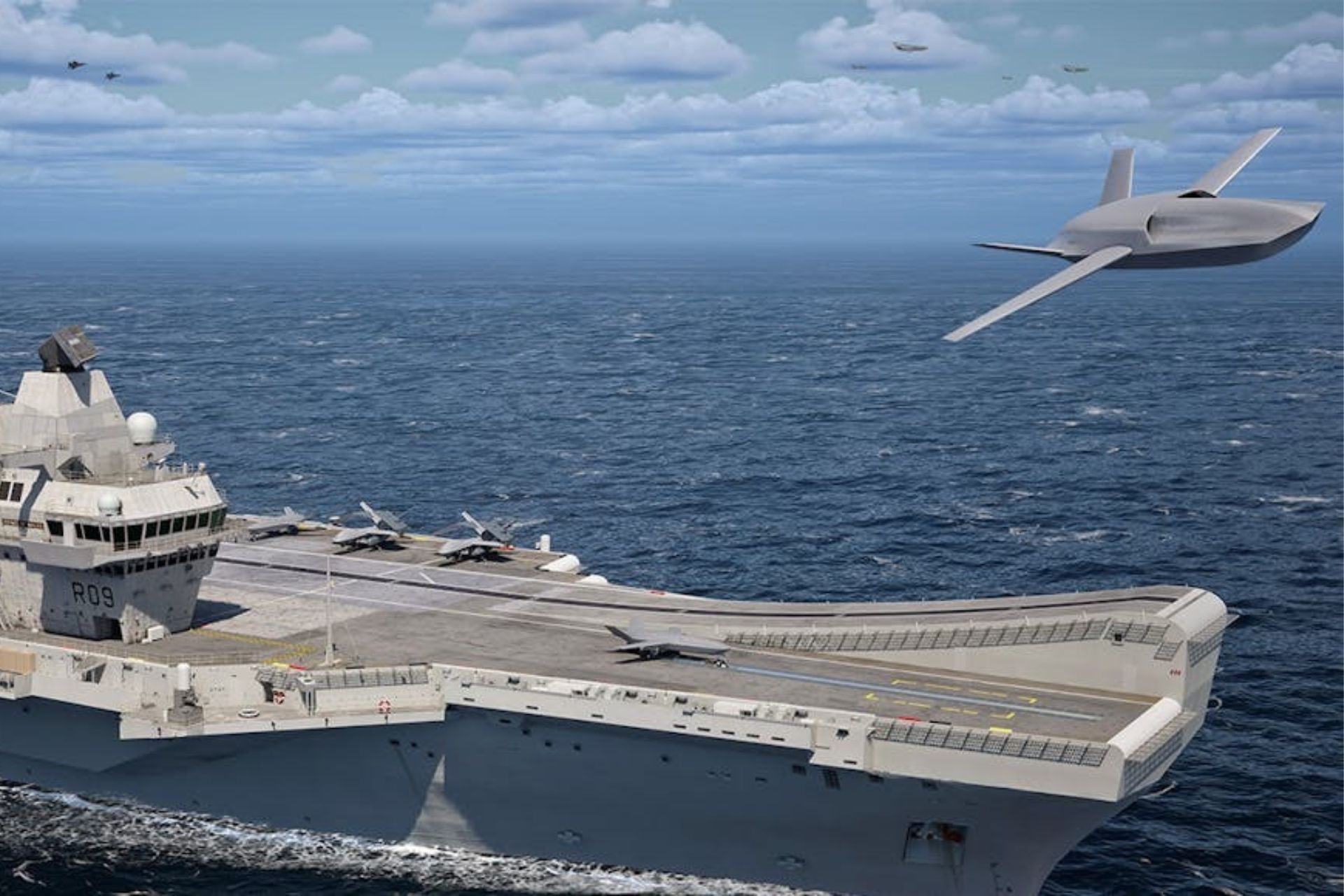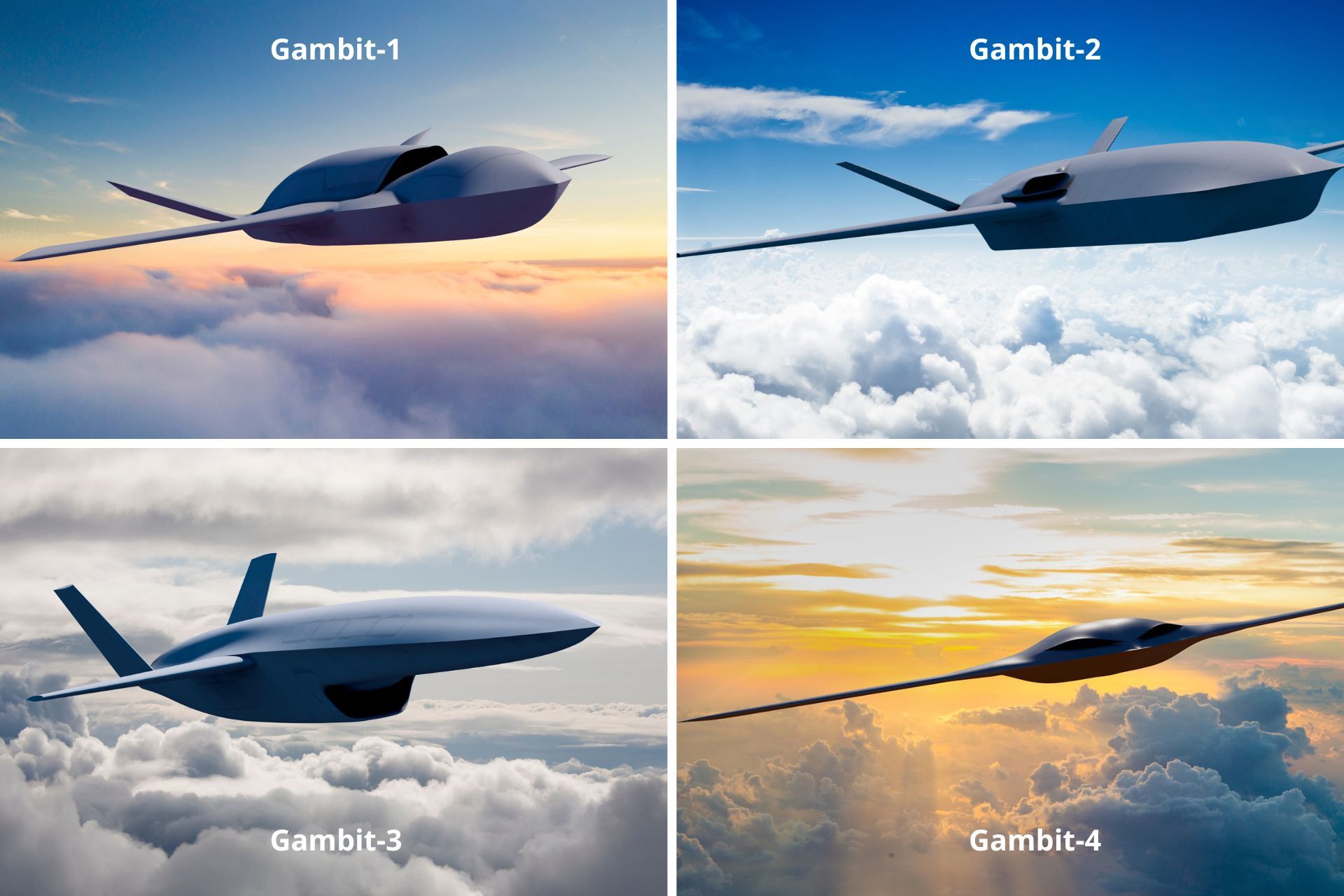Breaking News
General Atomics Unveils Gambit 5 Carrier-Capable Drone at Farnborough Airshow.
At the Farnborough International Airshow, which began on July 22, General Atomics unveiled a new member of its Gambit drone family, the Gambit 5, designed to operate from aircraft carriers. This innovation aligns with the company's broader vision for uncrewed naval aviation, aimed at the United Kingdom and other potential customers.
Follow Army Recognition on Google News at this link

The Gambit 5 was presented for the first time at the Farnborough International Airshow, as part of a broader naval aviation vision, particularly for the Queen Elizabeth class carriers of the United Kingdom. (Picture source: General Atomics)
General Atomics revealed the development of a fifth member of its Gambit drone family, the Gambit 5, designed for launch and recovery by aircraft carriers. This new addition is based on a modular 'chassis' concept, integrating advanced technologies to enhance the operational capabilities of naval air wings. The Gambit 5 was presented for the first time at the Farnborough International Airshow, as part of a broader naval aviation vision, particularly for the Queen Elizabeth class carriers of the United Kingdom.
Initially conceptualized as a carrier-capable version of the Gambit 2, an air-to-air uncrewed combat air vehicle (UCAV), the Gambit 5 has evolved into a versatile platform. According to C. Mark Brinkley, a spokesperson for General Atomics, the Gambit 5 can be adapted for various missions, including intelligence, surveillance, and reconnaissance (ISR), beyond just weapons delivery. The Gambit series, introduced by GA-ASI in 2022, is based on a common chassis integrating an AI-driven 'brain,' flight control systems, and mission systems, allowing for rapid iteration and adaptation to different mission sets.
The new carrier-capable Gambit 5 concept is still in its early development stages, with ongoing discussions with potential customers at events like the Farnborough Airshow. A major challenge for the Gambit 5 will be adapting its common chassis to the rigorous demands of carrier operations, such as the stresses imposed by catapult launches and arrested landings. This adaptation could involve strengthening the chassis and integrating robust subsystems to withstand these operational conditions.
The UK's interest in the Gambit 5 is driven by its plans to convert the Queen Elizabeth class carriers from short takeoff and vertical landing (STOVL) configurations to systems that can support catapult-assisted takeoff but arrested recovery (CATOBAR) operations. This conversion would expand the uncrewed component of the air wings on these carriers, potentially integrating various drone platforms, including the Gambit 5 and MQ-9B drones capable of operating with short takeoff and landing (STOL) kits.
The Royal Air Force has shown interest in the "Sea Protector" version of the MQ-9B, aiming for its service introduction by 2028, subject to funding and strategic defense reviews. This development follows various drone tests aboard Queen Elizabeth class carriers, including General Atomics' Mojave, optimized for short takeoff and landing.

The different models of the Gambit drone family by General Atomics (Picture source: General Atomics)
General Atomics sees the Gambit 5 as a step toward broader uncrewed carrier-based aviation capabilities. The company has extensive experience in this field, having participated in projects like the U.S. Navy’s Unmanned Carrier-Launched Airborne Surveillance and Strike (UCLASS) program, which evolved into the Carrier-Based Aerial-Refueling System (CBARS). Although General Atomics' CBARS entry lost to Boeing’s MQ-25 Stingray, the company's expertise in relative navigation, autonomy, and shipboard operations remains robust.
The Gambit 5 concept, alongside other uncrewed aerial systems like the MQ-9B STOL, could significantly enhance the operational capabilities of carrier air wings by providing additional mass and extending the targeting and situational awareness capabilities of carrier strike groups. This aligns with the U.S. Navy's vision, which anticipates that up to 60% of its carrier air wings will eventually comprise drones, including highly autonomous, low-cost collaborative combat aircraft (CCA).
In conclusion, the development of the Gambit 5 represents an important step in the evolution of carrier-based uncrewed aviation, offering enhanced capabilities for the Royal Navy and potentially other naval forces worldwide. This new platform reflects more than 15 years of dedicated research and development by General Atomics, promising rapid advancements in naval aviation technology.


























